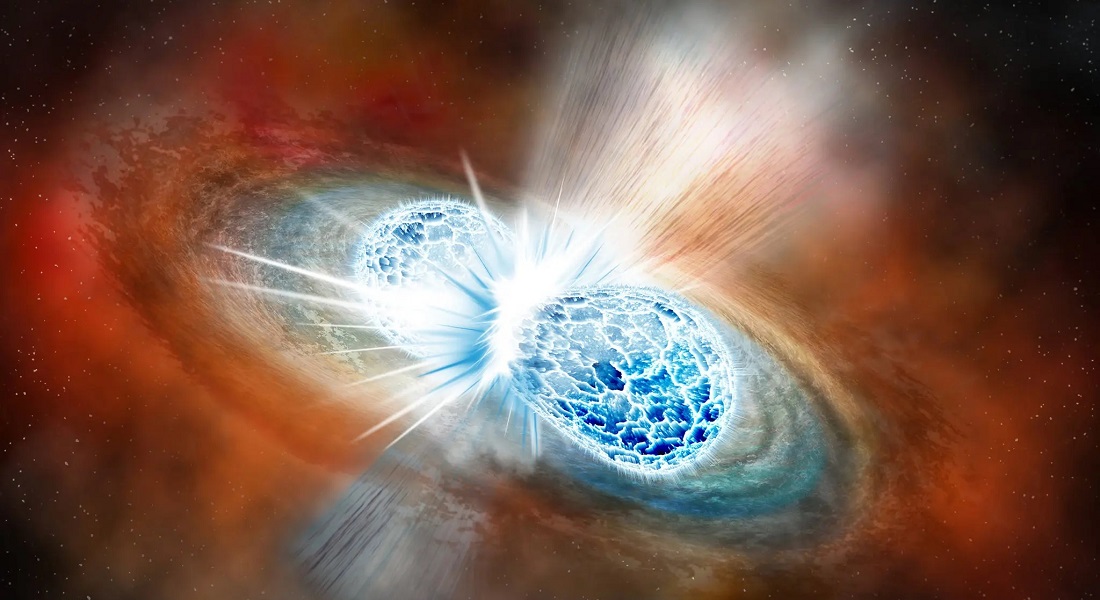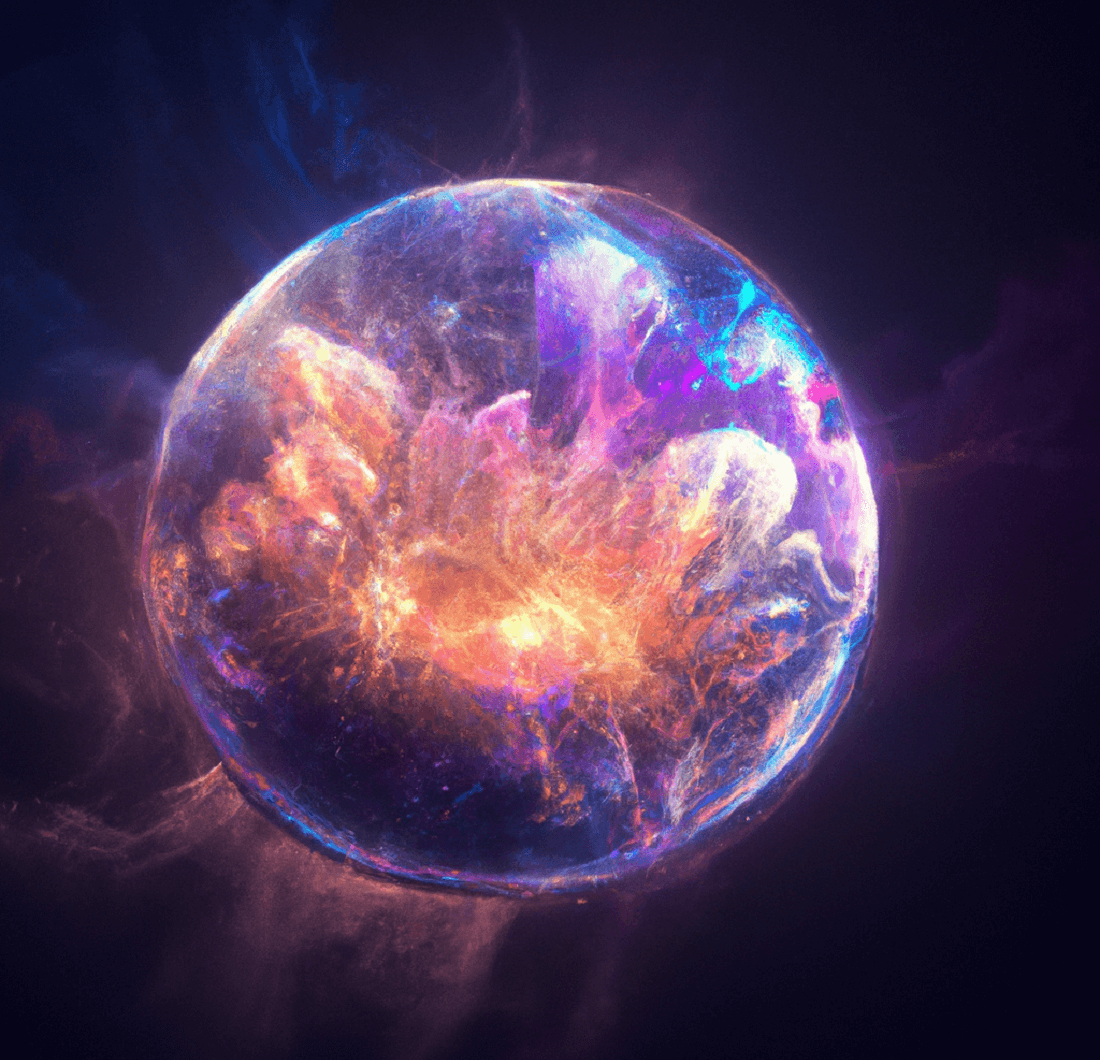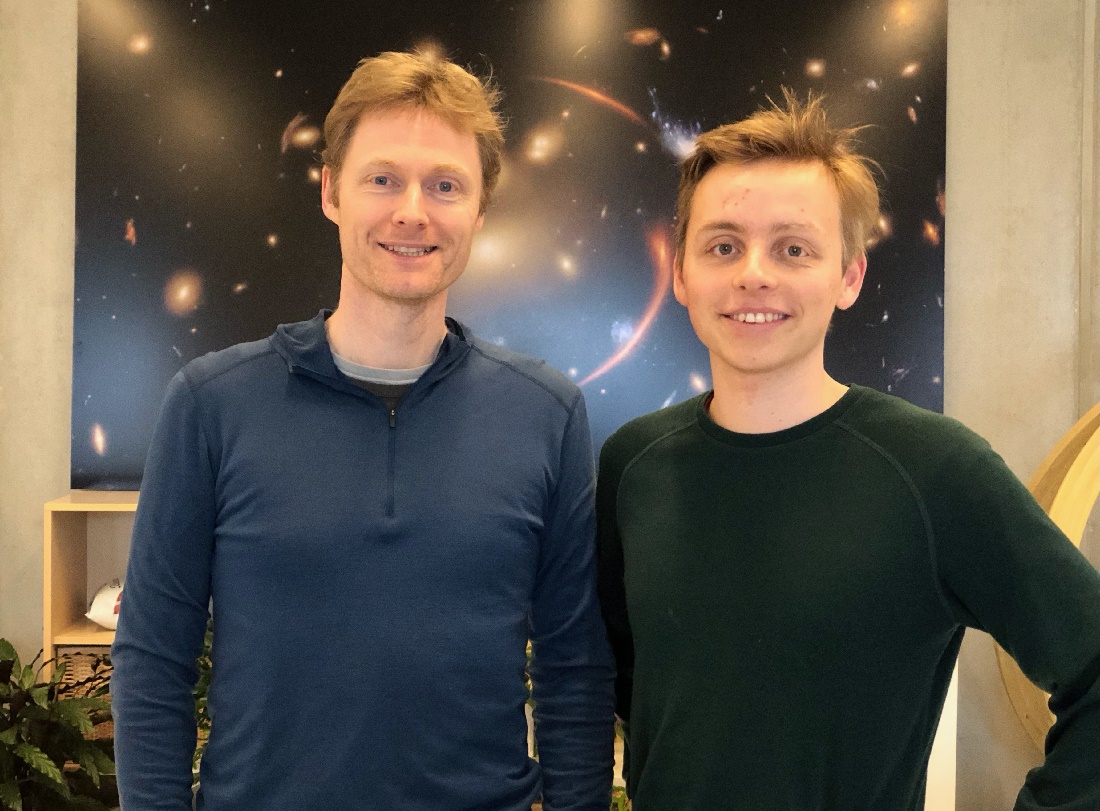Astrophysicists discover the perfect explosion in space
When neutron stars collide they produce an explosion that, contrary to what was believed until recently, is shaped like a perfect sphere. Although how this is possible is still a mystery, the discovery may provide a new key to fundamental physics and to measuring the age of the Universe. The discovery was made by astrophysicists from the University of Copenhagen and has just been published in the journal Nature.

Kilonovae - the giant explosions that occur when two neutron stars orbit each other and finally collide - are responsible for creating both great and small things in the universe, from black holes to the atoms in the gold ring on your finger and the iodine in our bodies. They give rise to the most extreme physical conditions in the Universe, and it is under these extreme conditions that the Universe creates the heaviest elements of the periodic table, such as gold, platinum and uranium.
But there is still a great deal we do not know about this violent phenomenon. When a kilonova was detected at 140 million light-years away in 2017, it was the first time scientists could gather detailed data. Scientists around the world are still interpreting the data from this colossal explosion, including Albert Sneppen and Darach Watson from the University of Copenhagen, who made a surprising discovery.
"You have two super-compact stars that orbit each other 100 times a second before collapsing. Our intuition, and all previous models, say that the explosion cloud created by the collision must have a flattened and rather asymmetrical shape," says Albert Sneppen, PhD student at the Niels Bohr Institute and first author of the study published in the journal Nature.
This is why he and his research colleagues are surprised to find that this is not the case at all for the kilonova from 2017. It is completely symmetrical and has a shape close to a perfect sphere.
"No one expected the explosion to look like this. It makes no sense that it is spherical, like a ball. But our calculations clearly show that it is. This probably means that the theories and simulations of kilonovae that we have been considering over the past 25 years lack important physics," says Darach Watson, associate professor at the Niels Bohr Institute and second author on the study.

The spherical shape is a mystery
But how the kilonova can be spherical is a real mystery. According to the researchers, there must be unexpected physics at play:
"The most likely way to make the explosion spherical is if a huge amount of energy blows out from the center of the explosion and smooths out a shape that would otherwise be asymmetrical. So the spherical shape tells us that there is probably a lot of energy in the core of the collision, which was unforeseen," says Albert Sneppen.
When the neutron stars collide, they are united, briefly as a single hypermassive neutron star, which then collapses to a black hole. The researchers speculate whether it is in this collapse that a large part of the secret is hidden:
"Perhaps a kind of 'magnetic bomb' is created at the moment when the energy from the hypermassive neutron star's enormous magnetic field is released when the star collapses into a black hole. The release of magnetic energy could cause the matter in the explosion to be distributed more spherically. In that case, the birth of the black hole may be very energetic," says Darach Watson.
However, this theory does not explain another aspect of the researchers' discovery. According to the previous models, while all elements produced are heavier than iron, the extremely heavy elements, such as gold or uranium, should be created in different places in the kilonova than the lighter elements such as strontium or krypton, and they should be expelled in different directions. The researchers, on the other hand, detect only the lighter elements, and they are distributed evenly in space.
They therefore believe that the enigmatic elementary particles, neutrinos, about which much is still unknown, also play a key role in the phenomenon.
"An alternative idea is that in the milliseconds that the hypermassive neutron star lives, it emits very powerfully, possibly including a huge number of neutrinos. Neutrinos can cause neutrons to convert into protons and electrons, and thus create more lighter elements overall. This idea also has shortcomings, but we believe that neutrinos play an even more important role than we thought," says Albert Sneppen.
A New Cosmic Ruler
The shape of the explosion is also interesting for an entirely different reason:
"Among astrophysicists there is a great deal of discussion about how fast the Universe is expanding. The speed tells us, among other things, how old the Universe is. And the two methods that exist to measure it disagree by about a billion years. Here we may have a third method that can complement and be tested against the other measurements," says Albert Sneppen.
The so-called "cosmic distance ladder" is the method used today to measure how fast the Universe is growing. This is done simply by calculating the distance between different objects in the universe, which act as rungs on the ladder.
"If they are bright and mostly spherical, and if we know how far away they are, we can use kilonovae as a new way to measure the distance independently – a new kind of cosmic ruler," says Darach Watson and continues:
"Knowing what the shape is, is crucial here, because if you have an object that is not spherical, it emits differently, depending on your sight angle. A spherical explosion provide much greater precision in the measurement.”
He emphasizes that this requires data from more kilonovae. They expect that the LIGO observatories will detect many more kilonovae in the coming years.
ABOUT THE STUDY
- The analyses have been carried out on data from the kilonova AT2017gfo from 2017. The researchers have analyzed data from the kilonova. Those data are the ultraviolet, optical, and infrared light from the X-shooter spectrograph on the Very Large Telescope at the European Southern Observatory, combined with previous analyses of gravitational waves, radio waves and data from the Hubble Space Telescope.
- The scientific article about the study has been published in the journal Nature.
- The study is an important early result of the HEAVYMETAL collaboration, which was recently awarded an ERC Synergy grant.
- The following researchers contributed to the work: Albert Sneppen and Darach Watson from the Cosmic Dawn Center/ Niels Bohr Institute, University of Copenhagen; Andreas Bauswein and Oliver Just, GSI Helmholtzzentrum für Schwerionenforschung, Germany; Rubina Kotak from the University of Turku, Finland; Ehud Nakar and Dovi Poznanski from Tel Aviv University, Israel; and Stuart Sim from Queen's University Belfast, UK.

Contact
Darach Watson
Associate Professor
Cosmic Dawn Center (DAWN)
Niels Bohr Institute
University of Copenhagen
+45 24 80 38 25
darach@nbi.ku.dk
Albert Sneppen
PhD-studerende
Cosmic Dawn Center (DAWN)
Niels Bohr Institute
University of Copenhagen
+45 28 97 64 34
albert.sneppen@nbi.ku.dk
Maria Hornbek
Journalist
Faculty of Science
University of Copenhagen
+45 22 95 42 83
maho@science.ku.dk
